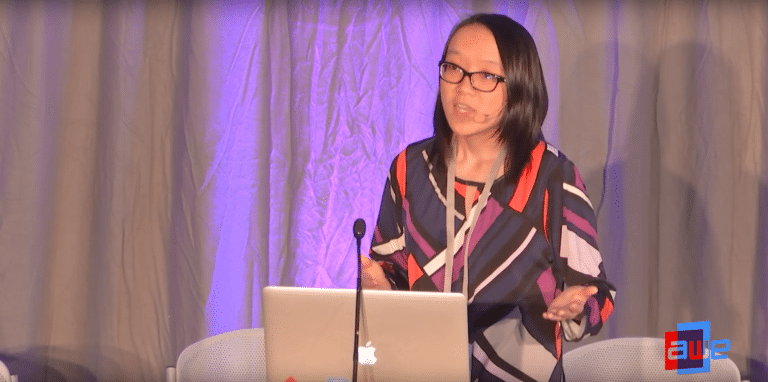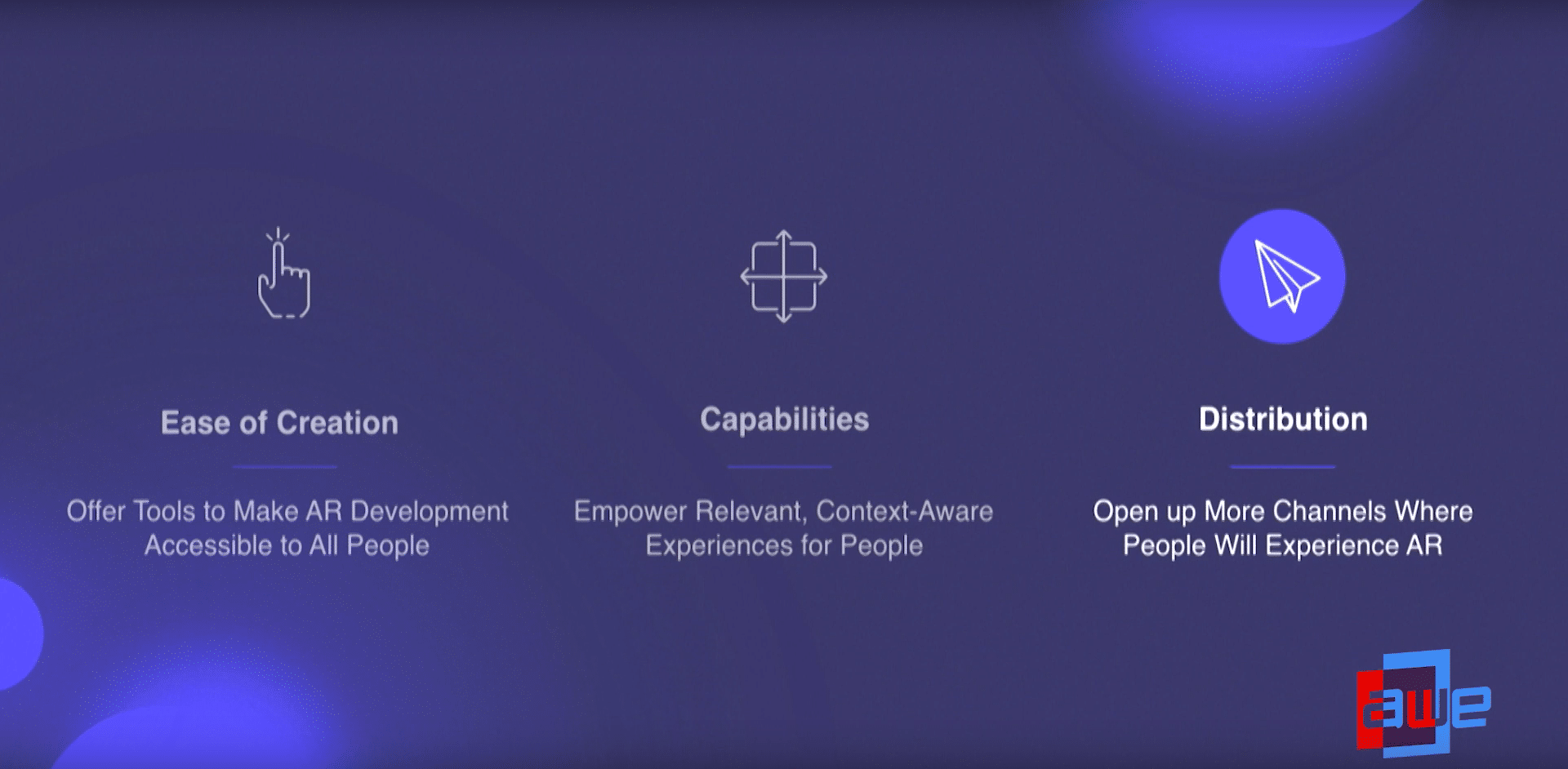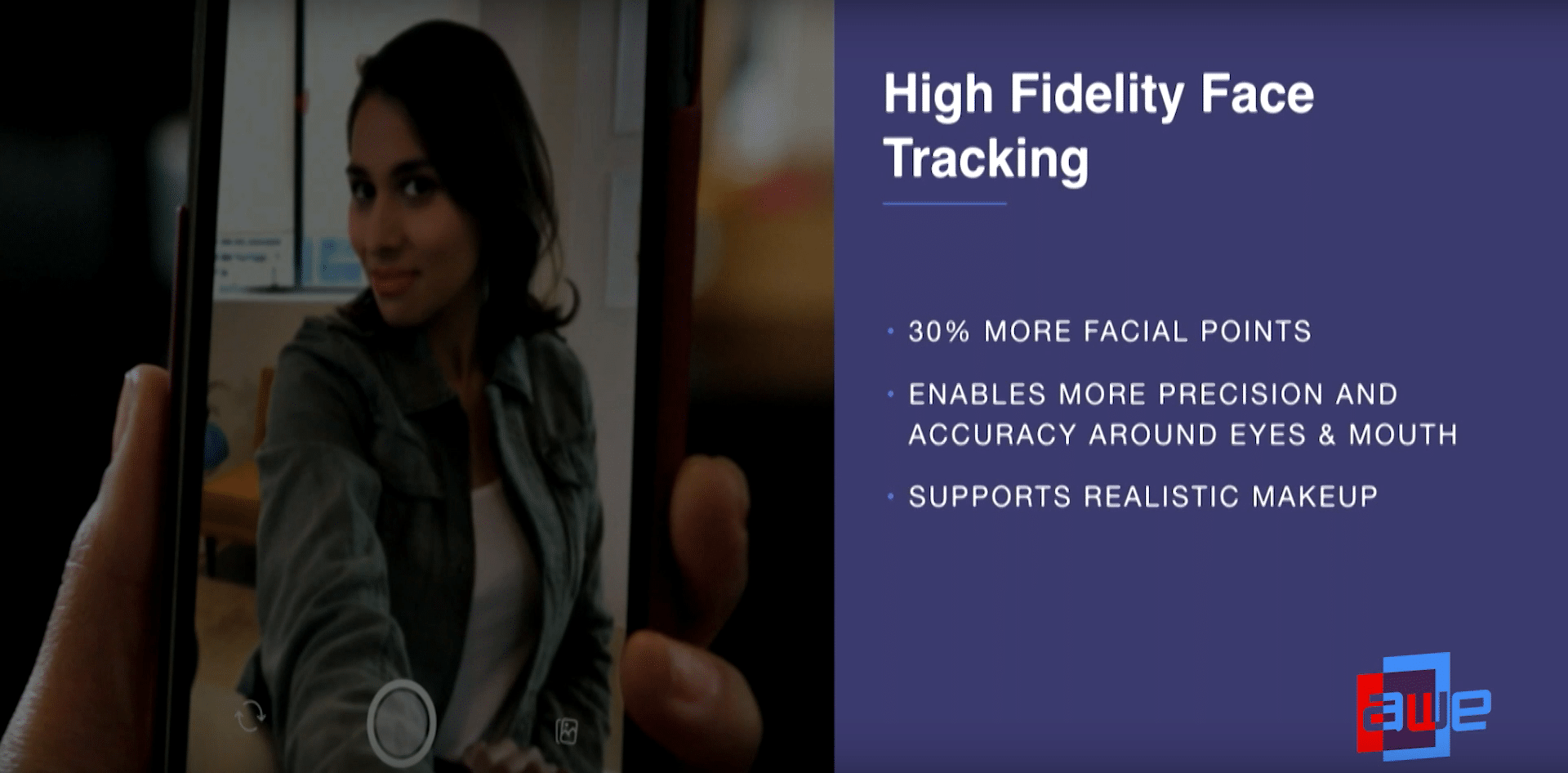
XR Talks is a series that features the best presentations and educational videos from the XR universe. It includes embedded video, as well as narrative analysis and top takeaways. Speakers’ opinions are their own.
Though Facebook has well-known aspirations for face-worn AR (and VR), it knows the near term gateway drug is mobile AR. That includes Facebook’s ad monetization and social engagement ambitions, which stem from mobile’s scale. And mobile is where Facebook already lives.
“Headsets are just not quite ready for large-scale consumer adoption,” said Facebook’s Elise XU at AWE Europe. “We want to give developers and creators an easy and cheap way to start creating things in AR… Mobile is a wonderful gateway into that, and there’s a ton of scale.”
Facebook has taken many steps in this direction with its developer platform, Spark AR Studio (formerly Camera Effects). As we’ve examined, it’s attracted advertisers like Nike and Michael Kors with the benefit of cross-platform reach. This mitigates AR’s early-stage reach deficiencies.
“Because it’s delivered through the Facebook camera, you have potential to reach 1.5 billion people,” she said. “This year we want to expand that [by] growing the inventory of AR content and giving developers ability to make AR experiences [for] more people and more channels.”

To clarify, 1.5 billion is an installed base for Facebook, not active AR users. But Facebook plans to penetrate deeper through 1. easier AR creation, 2. more capabilities and 3. greater distribution. For creation, its Patch editor utilizes a visual programming interface for drag & drop functionality.
This means programming such as JavaScript isn’t required to make AR experiences on Spark AR Studio. And it’s doubling down on that strategy by making it easier to import AR graphics. A partnership with Sketchfab for example will make it easy to import thousands of 3D objects.
“There’s a library in AR Studio that contains a collection of 3D models pre-made from Sketchfab,” she said. “We’ve already vetted them to make sure that they’re compatible with [Spark] AR Studio and you can just browse them and add them directly into your projects.”
As for #2 (AR capabilities), Facebook is evolving its interactions for augmenting people (front-facing camera), and augmenting the world (rear facing camera). For the former, it’s also making advertiser-friendly enhancements, such as better face tracking for trying on style items.
“We launched a high-fidelity tracker that tracks 30 percent more points on the face,” said Xu. “It enables more precision accuracy around areas like the eyes and the mouth, and this is important for realistic makeup effects…. one of the major verticals we’re tackling with that is cosmetics.”

As for outward (rear-facing camera) effects for augmenting the world around us, Facebook’s Target AR feature is a sort of marker-based approach to activate 3D content on any 2D plane. This is meant for things like pop-up animations on museum placards, or ad-friendly use cases.
“The 2D planar object could be a sign… but it could also be product labels… it could be illustrations in books,” said Xu. “Eventually we want the camera to be able to understand your world. And the more it’s able to do that, the more it’s able to give you context-aware experiences.”
Facebook’s Location AR meanwhile works towards geographically-anchored AR graphics that carry location relevance. This will be a key value-driver in AR, tied to the concept of geographic scarcity. And like the above moves it’s advertiser-friendly, considering location-based marketing.
“As AR evolves and expands, it’ll become more important for these experiences to be location relevant, and to be particularly tied to certain locations so they feel like they’re part of that place,” said Xu. “Location can be as broad as a country or as specific as a particular address.”

Last among Facebook’s over-arching AR initiatives is #3: broadening distribution. This is a numbers game (just like VR) to attract developers who are deciding where to apply resources. And the next untapped frontier for AR among Facebook’s properties is the mighty Instagram.
“A big push this year has been bringing our AR platform to the Instagram camera,” said Xu. “The next phase is opening it up to more creators … we’re going to have our first batch of creators who are not already known brands or influencers and see what they come up with.”
Clearly, the key theme through all these moves is lowering barriers to AR creation and distribution. That goes for both independent developers and advertisers. The former create content that grow Facebook usage and engagement, while the latter bring in the dollars. And it’s working so far…
“We’ve shown in our first test of AR ads that the AR version of the ad when A/B tested against a non-AR ad drives statistically-significantly more conversion,” said Xu. “The next step is making the creation of these assets far easier and cheaper. One potential way to do that is create a tool where advertisers simply upload 3D models and we auto-generate the AR effect for them.”
See the entire talk below.
For deeper XR data and intelligence, join ARtillery PRO and subscribe to the free AR Insider Weekly newsletter.
Disclosure: AR Insider has no financial stake in the companies mentioned in this post, nor received payment for its production. Disclosure and ethics policy can be seen here.
Header image credit: AWE, YouTube
